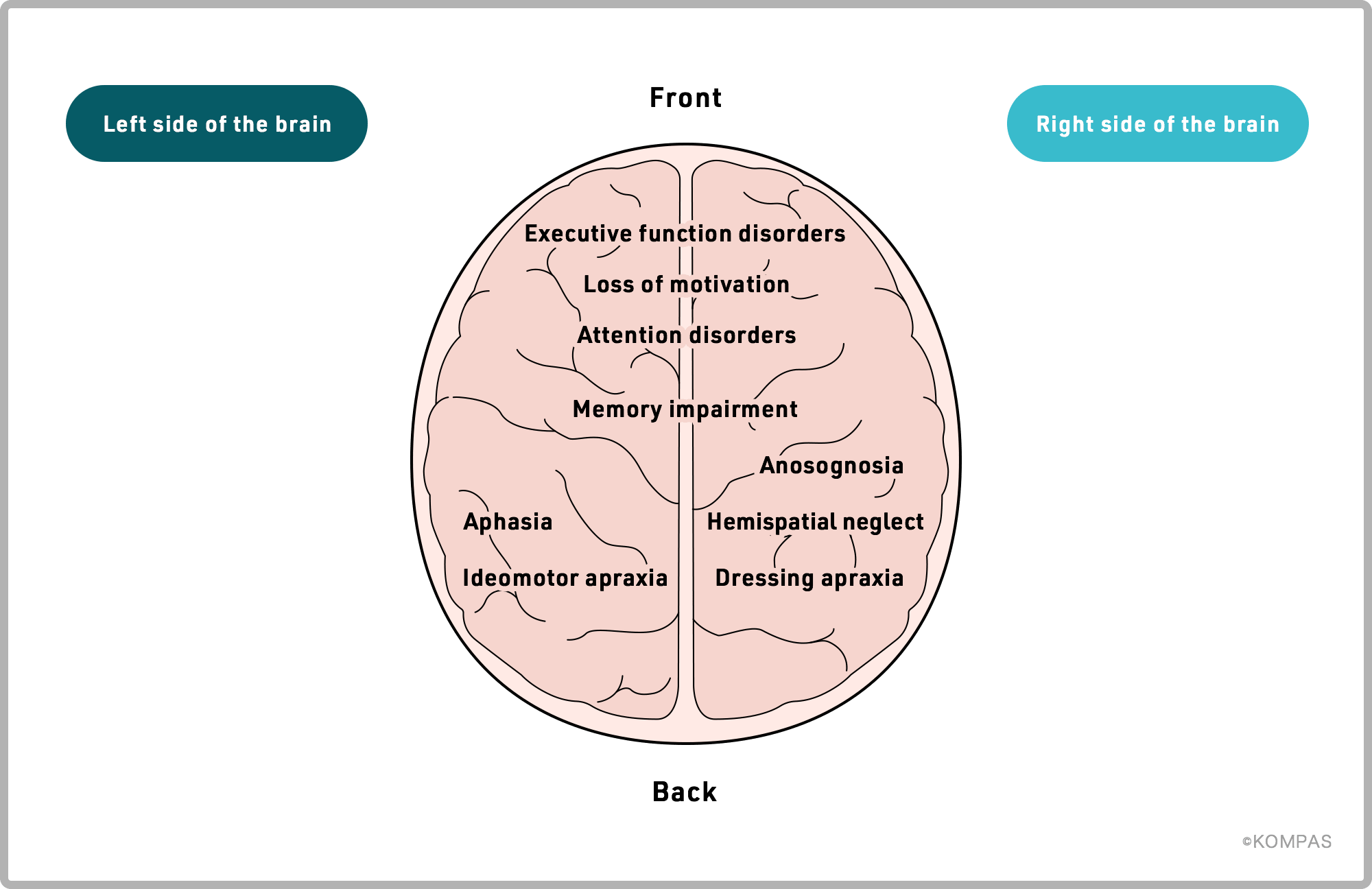Traumatic brain injury occurs when brain tissue is damaged due to a strong external force applied to the head, such as in a traffic accident or fall. It has an extremely wide range of causes, and often results in lifelong disorders in the form of partial paralysis or sensory or memory impairment. In the US alone, the number of people suffering from aftereffects of traumatic brain injury is estimated at 5.30 million (according to the US Centers for Disease Control and Prevention).
Traumatic brain injury is classified into coup injuries (damage under the site of impact as a result of accelerating or decelerating force applied to the brain) and contrecoup injuries (damage on the side opposite the area of impact). Blows to front of the head mostly result in coup injuries to the frontal or temporal lobes of the brain, and only rarely cause contrecoup injuries. Conversely, blows to the back of the head often result in contrecoup injuries to the frontal or temporal lobes of the brain, which are known to cause larger brain damage than coup injuries.
Traumatic brain injury is a collective term to denote a range of conditions spanning from brain hemorrhages and subarachnoid hemorrhages caused by a direct blow, which are easy to diagnose using imaging technology, to microscopic damage from indirect blows that cause the brain to shake inside the skull.
Traumatic brain injury can also be categorized into primary brain damage sustained instantly upon receiving a blow to the head, and secondary brain damage, which includes subsequent brain hemorrhage or swelling, or damages from a temporary suspension of blood or oxygen supply to the brain.
Leading causes of traumatic brain injury are traffic, sports, and labor accidents among younger people, and various types of falls among older people.


If the brain area that covers motor functions has suffered damage, common symptoms include paralysis of limbs and dizziness. Many of these cases are categorized under “higher brain dysfunction,” which refers to disorders that make it difficult for patients to control their behavior or emotions and therefore prevent them from functioning normally in society. Higher brain dysfunction is primarily treated through rehabilitation and training. However, in severe cases where patients daily lives are affected by difficulties in controlling behavior or emotions, pharmaceuticals such as antidepressants, antipsychotics, antiepileptics, anti-anxiety agents, and sleep medication are also used.
The extent to which one can recover from traumatic brain injury ultimately varies based on the magnitude of the brain damage, the age of the patient, the duration of consciousness disorders, and the severity of memory impairment. While recovery after six months from the trauma is rare, there have been reports of neurological recovery up to one year after the trauma. Unfortunately, many patients continue to suffer from severe aftereffects and are waiting for an effective treatment to emerge. Regenerative medicine may prove to be that treatment in the future.